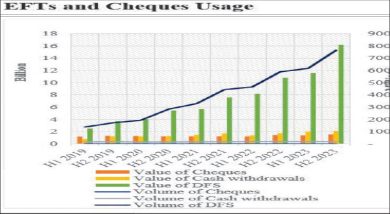Blantyre most expensive, cost of living up K564 524
Low income earners continue to grapple with balancing the financial equation as the cost of living has risen by 7.8 percent to an average of K491 037 in January 2024.
The strain is despite government’s move to raise the minimum wage for low wage earners from K50 000 to K90 000, far below the current cost of living.

Published data from the Centre for Social Concern (CfSC) shows that while the average cost of living between December 2023 and January 2024 has increased from K455 707 to K491 037, Blantyre is the most expensive city with a cost of living of K564 524.
This was followed by Zomba at K522 377.
Conversely, Karonga was the least expensive, with a cost of living of K401 760 in January 2024
In its accompanying statement to the January 2024 Basic Needs Basket Report, CfSC concedes that low-income individuals and families are disproportionately affected by rising living costs.
Reads the report in part: “Basic necessities such as food, housing, and healthcare constitute a more substantial portion of their income.
“The current economic landscape exacerbates financial strains on vulnerable populations, making it imperative to implement targeted measures to alleviate their burden.”
CfSC says several factors have been identified as potential drivers of the rise in the cost of living, including economic conditions, supply and demand dynamics, market variations, external shocks, government policies, seasonal fluctuations, energy costs, currency exchange rates, and global market trends.
“The recent adjustments in minimum wage has been unsatisfactory if we compare the economic hardships the low income earners are going through,” said CfSC in the report.
To ease the burden, the centre has urged government to enhance existing social assistance programmes to provide immediate relief to low-income families and consider targeted subsidies for basic commodities, particularly food items and utilities, to mitigate the impact of price increases on essential goods.
Ironically, Malawi’s year-on-year inflation rate, a general increase in prices and fall in the purchasing value of money, has been on the rise in recent months.
In January 2024, for instance, inflation increased by 0.5 percentage points to 35 percent, with food and non-food inflation rates recorded at 44.9 percent and 22.0 percent, according to published National Statistical Office (NSO) data.
Meanwhile, the Reserve Bank of Malawi (RBM) has conceded that inflation outlook indicates elevated inflationary pressures, with the inflation path likely to be more than the 28.8 percent inflation outturn for 2023.
In an interview, Consumers Association of Malawi executive director John Kapito said consumers are experiencing “one of the worst economic crises”, in a country with no access to income and in an economy with the lowest growth where prospects for consumer welfare are almost impossible.
In his State of the Nation Address presented to Parliament a fortnight ago, President Lazarus Chakwera said government intends to increase the coverage of the social cash transfer programme from 10 percent to 15 percent hly to help cushion the vulnerable.





